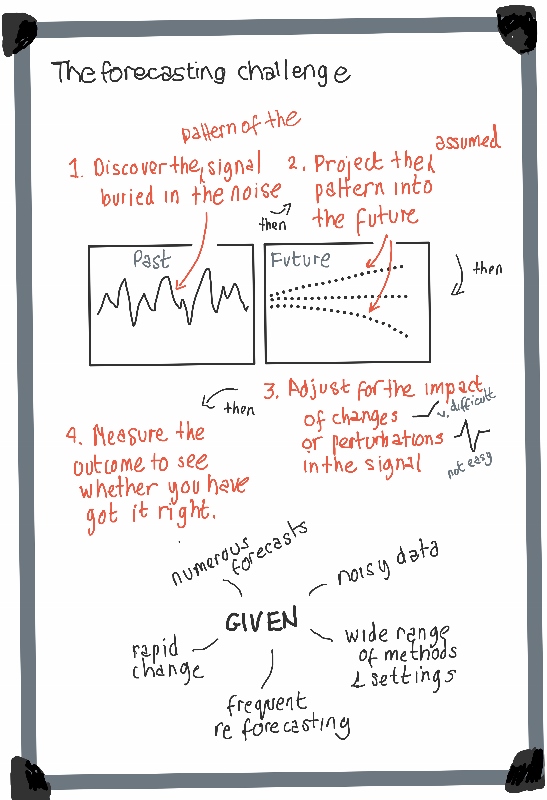 Note: Following is an eight-part serialization of selected content from Steve Morlidge's The Little (Illustrated) Book of Operational Forecasting.
Note: Following is an eight-part serialization of selected content from Steve Morlidge's The Little (Illustrated) Book of Operational Forecasting.
The forecasting challenge
It is not possible to forecast any future outcomes precisely.
Only the signal is potentially forecastable – noise is unforecastable in principle.
And all forecasts assume that the future is more or less like the past. But all past data infected by noise, which hides the signal.
And signals can and do change.
The challenge is to spot the patterns of signals hidden in data about the past, to project these in the future and to forecast whether, when and how these patterns will change.
And it is not possible to know in advance whether any particular forecasting technique will work. Sophistication is no guarantee of performance.
The only way is to measure how successful a forecast process has actually been in estimating the signal.
TAKEOUT
In forecasting, there are no marks for style, only results matter.
Coming Next: The measurement challenge
Measuring forecast error is not an end in itself – it only has value to the extent that it helps to improve the quality of forecasts. But, it is surprisingly tricky to measure this because some level of error is unavoidable. This lesson explains why simplistic measures of forecast error cannot be trusted.

